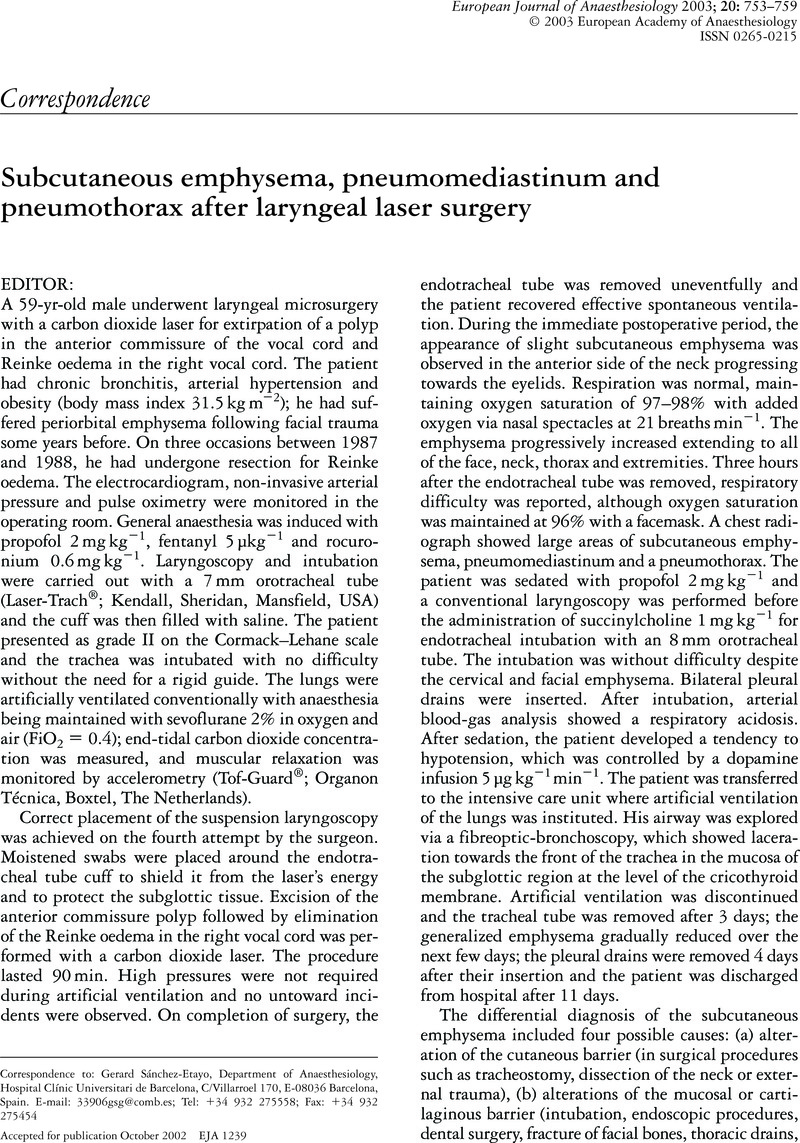No CrossRef data available.
Article contents
Breathing or ventilation via a mouth mask for rhinoplasty operations in the early postanaesthetic period
Published online by Cambridge University Press: 11 July 2005
Abstract
An abstract is not available for this content so a preview has been provided. Please use the Get access link above for information on how to access this content.

- Type
- Correspondence
- Information
- Copyright
- © 2003 European Society of Anaesthesiology
References
Nagaro T, Hamami G, Takasaki Y, Arai T. Ventilation via a mouth mask facilitates fiberoptic nasal tracheal intubation in anesthetized patients. Anesthesiology 1993; 78: 603–604.Google Scholar
Arai T, Nagaro T, Namba S, et al. Mouth mask method for fiberoptic tracheal intubation in difficult intubations. Masui 1996; 45: 244–248.Google Scholar




